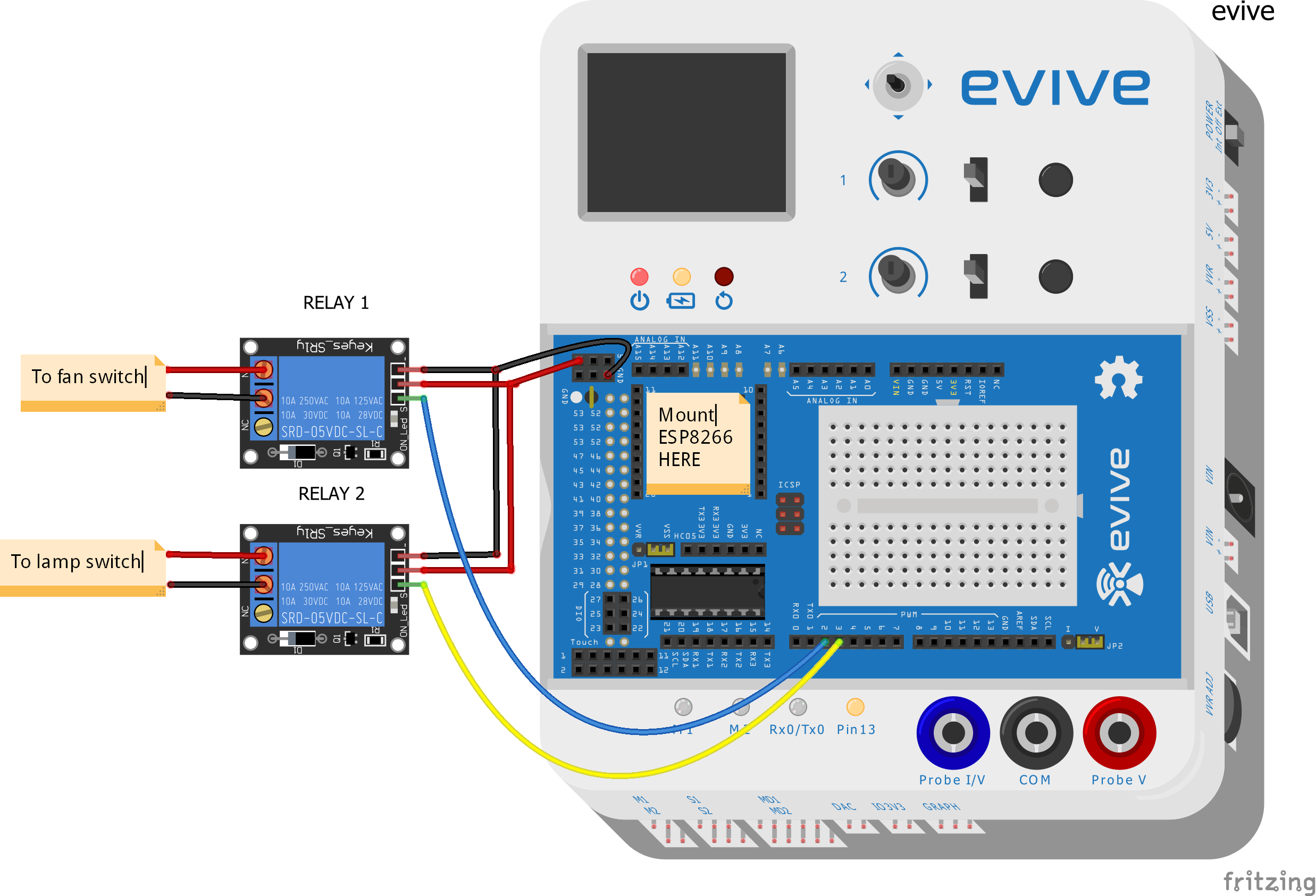You come home late from work, manage to get to your room somehow and launch yourself right at your bed to call it day but then you realize that you left the lights on and you neither have the energy nor are in the mood to get up. But alas, you don’t have a choice; well, only if you have manual switches.
What if we told you that you could control the lights and fans of your room, sitting (or lying?) in one place, with just a few taps on your Smartphone?
Behold the great IoT Based Home Automation System! With its powers, you can easily turn ON and OFF the light as and when you like without moving an inch. Life (for now) = Sorted!
So, why are you still lying on your bed?
Ready. Set. Automate!
Step 1: Things You'll Need:- evive
- ESP8266 Module (ESP-12) Or WiFi Module
- 5V Relay Module
- Male to Female jumper Cables
- M3 bolts of 8mm Length
- M3 Nuts
- Thick Cardboard or Wood
The above Electrical Components can be obtained in our evive IoT Kit. There are many projects listed on our Hackster which can be made using this Kit.
Step 2: Holding the Connections:We just cannot keep connections hanging. We need something to hold them. We need to assemble a box using cardboard or a wood.
Stick evive in this box. Cut the electric wires and attach them to the relay. Now, attach the relay to it.
As we need to control the home appliances, we need to first connect them to evive.
- Open one of the switchboards and near to that place evive.
- To the switches of the appliance connect relay at both the terminals. Here the relay works as a switch for the appliance it is connected to.Thus the number of the relays is equal to the number of appliances connected.
You need to make the connections as follows:
and apply the following code which can be downloaded from below.
To know more about Arduino, visit: https://thestempedia.com/tutorials/arduino-ide/
Step 5: WorkingOnce, you are done with them connect to the URL of your WiFi module. Because our WiFi Module acts as a server. The URL which we need to open appears in the Serial Monitor of Arduino.
The page will open up, from where you can control the appliances you want.
For detailed information visit:https://thestempedia.com/project/iot-based-home-automation/
Step 6: ConclusionWith this, your DIY IoT based Home Automation System is ready! You can now control the light and the air with a simple click!











Comments
Please log in or sign up to comment.